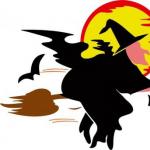Personification - what is it?
Ever since school, we have all heard about such a concept as personification. What is this? Many have probably already forgotten. What is the data for what it is used and what is characteristic of it. Now we will try to remember and understand this issue in more detail.
Impersonation: definition of the concept, detailed description
Often this literary method is used in fairy tales. Personification is the giving of thoughts, feelings, experiences, speech or actions to phenomena, inanimate objects and animals. Thus, objects can move independently, nature is a living world, and animals speak with human voices and are able to think in a way that only people can do in reality. The origin of personification dates back to the ancient world, when everything was based on myths. It is in myths that talking animals are first encountered, as well as giving things uncharacteristic properties for them. At the same time, one of the main tasks of personalization is the approximation of the abilities of the inanimate world to those that are characteristic of the living.
Impersonation examples
You can better understand the essence of personification by giving a few examples:

What is the personification
What does it mean?

A personification (a word that gives life to objects) is often a verb that can be both before and after the noun that it describes, or rather, sets it into action, animates it and creates the impression that an inanimate object can also fully exist. like a person. But this is not just a verb, but a part of speech that takes on many more functions, turning speech from ordinary to bright and mysterious, into unusual and at the same time capable of telling a lot that characterizes impersonation techniques.
Personalization as a literary trope
It is literature that is the source of the most colorful and expressive phrases that animate phenomena and objects. In another way, in the literature, this trope is also called personalization, embodiment or anthropomorphism, metaphor or humanization. It is often used in poetry to create a more full and melodic form. Personification is also often used to give them more heroism and a reason for admiration. That this is a literary device, that any other, such as an epithet or an allegory, all serve to embellish phenomena, to create a more impressive reality. It is enough to consider only a simple literary phrase: "The night bloomed with golden lights." How much poetry and harmony in it, the flight of thought and dreaminess, the colorfulness of the word and the brightness of the expression of thought.

One could simply say that the stars are burning in the night sky, but such a phrase would be full of banality. And just one single personification can radically change the sound of a seemingly familiar and understandable phrase for everyone. In addition, it should be noted that the personification as a part of literature appeared due to the desire of the authors to bring the description of the characters of folklore closer to the heroism and greatness of those spoken of in ancient Greek myths.
The use of personification in everyday life
We hear and use examples of personification in everyday life almost daily, but we don’t think about what they are. Should they be used in speech or is it better to avoid them? At their core, incarnations are mythopoetic in nature, but over the long time of their existence they have already become an integral part of ordinary everyday speech. It all started with the fact that during the conversation they began to use quotes from poems and others, which gradually turned into already familiar phrases. It seems that the usual expression "the clock is in a hurry" is also a personification. It is used both in everyday life and in literature, but is in fact a typical personification. Fairy tale and myth are the main sources, in other words, the foundation of those metaphors that are used in conversation today.
reincarnated personification
What it is?

This statement can be explained from the point of view of the evolution of personification. In ancient times, it was used as a personification as a religious and mythological device. Now it is used to transfer the abilities of living beings to inanimate objects or phenomena and is used in poetry. That is, personalization gradually acquired a poetic character. In our time, there are many disputes and conflicts about this, since specialists from different scientific fields interpret the nature of the personification in their own way. The reincarnated or ordinary personification still has not lost its meaning, although it is described from different points of view. Without it, it is difficult to imagine our speech and, in fact, modern life.




